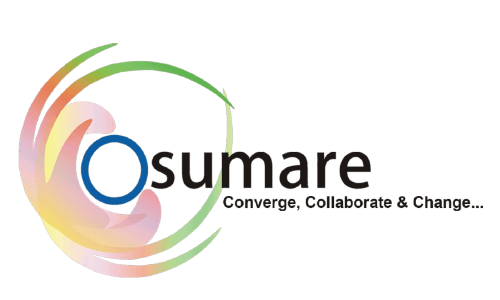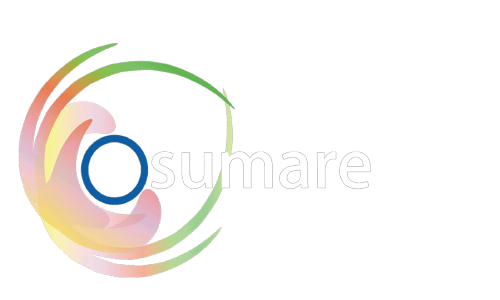To rank well in search results and draw in the correct audience, you must provide high-quality content. Whether you are a blogger, digital marketer, or company owner, knowing the basics of SEO (Search Engine Optimization) and content production will greatly increase your online visibility.
Important issues like what SEO content is, why it matters, and how to develop it successfully will all be addressed in this tutorial. We’ll also look at how you may improve your website’s search engine presence by collaborating with a leading SEO firm in Chennai.
What is SEO Content?
Any information produced to rank on search engines such as Google, Bing, and Yahoo is referred to as SEO content. Videos, infographics, landing pages, product descriptions, blog entries, and more are all included.
By matching search intent and optimizing for pertinent keywords, SEO content aims to draw in organic visitors. When done properly, SEO content helps websites become more visible, generate more leads, and enhance user interaction.
An SEO-focused marketing firm in Chennai can assist companies in creating excellent, optimized content that appeals to both search engines and human readers.
Why is SEO Content Important?
1. Helps Your Website Rank Higher on Google
To decide which web sites should be displayed at the top of search results, search engines such as Google employ sophisticated algorithms. Your content has a better chance of ranking higher if it is properly formatted, has high-quality material, and is optimized with targeted keywords. Websites that show up on Google’s top page receive more traffic, hits, and conversions. For this reason, companies frequently collaborate with a leading SEO firm in Chennai to improve their content ranks.
2. Attracts Organic Traffic Without Paid Ads
Unlike paid advertisements that demand constant investment, SEO content helps provide free, natural traffic to your website. After being published, a well-optimized webpage or blog article can continue to bring in steady traffic for months or even years. Businesses may employ SEO content to draw people naturally rather of continuously spending money on PPC (Pay-Per-Click) advertisements. In order to create an SEO plan that guarantees sustained traffic development, many businesses collaborate with a digital marketing firm in Chennai.
3. Builds Trust & Brand Authority
Websites that offer insightful and thoroughly researched material are trusted by users. Users see your brand as an authority in the field when it regularly posts useful, accurate, and interesting content. Good content makes people want to come back to your website, share it, and even recommend your company to others. By using effective SEO and content marketing techniques, a top digital marketing agency in Chennai can assist organizations in building authority.
4. Improves Engagement & User Experience
Providing a positive user experience is just as important to SEO as using keywords. Your material should be educational, aesthetically pleasing, and simple to read since search engines like websites that maintain user engagement. The amount of time visitors spend on your sites is increased by engaging content, which also lowers bounce rates—the rate at which people quickly depart your site. A website with a clear structure and mobile and desktop optimization guarantees that users can easily discover the information they want.
5. Boosts Sales & Lead Generation
By addressing their wants, responding to their inquiries, and pointing them in the direction of a solution, SEO content may turn visitors into paying clients. Product descriptions, landing pages, and blog articles that are well-written can influence consumers to take action, such as completing a form, buying something, or subscribing to a newsletter. Your content will be deliberately designed to draw in high-intent, ready-to-buy customers if you choose the top SEO services company.
How to Create High-Quality SEO Content
Understand Your Audience and Search Intent
Before you even start writing, you need to understand your audience and their search behavior. SEO content should answer user queries effectively and match different types of search intent.
Types of Search Intent:
- Informational: Users are looking for knowledge (e.g., “How to improve website SEO”).
- Navigational: Users search for a specific brand or website (e.g., “Best SEO company in Chennai“).
- Transactional: Users are ready to take action (e.g., “Buy SEO services for businesses”).
- Commercial Investigation: Users are comparing services before making a purchase (e.g., “Top digital marketing agency in Chennai vs. best SEO company in Chennai”).
Actionable Tip: Use Google Autocomplete, People Also Ask, and keyword research tools (like SEMrush, Ahrefs, or Ubersuggest) to discover the exact questions your audience is asking.
Conduct Keyword Research and Select the Right Keywords
SEO success begins with keyword research—choosing the right words and phrases that people are searching for.
How to Find the Right Keywords:
- Use Google Keyword Planner, Ahrefs, SEMrush, or Ubersuggest to find high-traffic, low-competition keywords.
- Target long-tail keywords (e.g., “best SEO services for small businesses”) as they have less competition and higher conversion rates.
- Identify LSI (Latent Semantic Indexing) keywords, which are related terms that help search engines understand your content better.
- Look at your competitor’s content and the keywords they rank for.
Actionable Tip: Aim to place your primary keyword in the title, URL, headings, meta description, and throughout the content naturally.
Create a Compelling Title and Meta Description
Your title and meta description are the first things users see in search results, so they must be eye-catching and keyword-optimized.
Best Practices for SEO Titles:
- Keep it under 60 characters so it displays properly in search results.
- Include the main keyword at the beginning (e.g., “How to Create High-Quality SEO Content – A Step-by-Step Guide”).
- Make it engaging by adding numbers, power words, or a unique angle (e.g., “10 Proven Ways to Write SEO-Friendly Content That Ranks!”).
Best Practices for Meta Descriptions:
- Keep it under 160 characters.
- Include your target keyword naturally.
- Use actionable and persuasive language (e.g., “Learn how to create SEO-friendly content that ranks higher and drives organic traffic.”).
Actionable Tip: Use tools like CoSchedule Headline Analyzer to craft powerful headlines that attract clicks.
Structure Your Content with Proper Headings (H1, H2, H3, H4)
A well-structured blog post improves readability and helps search engines crawl and understand your content.
How to Organize Content with Headings:
- H1 (Main Title): Should include your main keyword (e.g., “How to Create High-Quality SEO Content”).
- H2 (Subheadings): Use for major sections like “Why is SEO Content Important?” or “Best Practices for Writing SEO Content.”
- H3 & H4 (Subsections): Use for detailed steps, bullet points, and additional explanations.
Actionable Tip: A properly formatted post with headings and bullet points reduces bounce rates and keeps users engaged.
Write High-Quality, Engaging, and Valuable Content
Search engines prioritize useful, in-depth, and original content that genuinely helps users.
Content Writing Best Practices:
- Use short paragraphs and bullet points to improve readability.
- Answer search intent directly in the first 100 words.
- Use storytelling and real-world examples to keep readers engaged.
- Write in a conversational tone (avoid jargon unless necessary).
- Keep sentence structures simple to maintain clarity.
Actionable Tip: Aim for at least 1,500 words for in-depth blog posts, but focus on quality over length.
Optimize On-Page SEO (Keywords, Images, Internal Links, External Links)
Optimizing on-page SEO elements ensures that your content ranks better on search engines.
Key On-Page SEO Elements to Optimize:
✔ Primary and secondary keywords should be placed naturally in the title, headings, first 100 words, and conclusion.
✔ Internal links to related blog posts and service pages help search engines discover more content.
✔ External links to authoritative sources improve credibility (e.g., linking to Google’s SEO guidelines).
✔ Image optimization with descriptive alt text and compressed file sizes helps in Google Image Search rankings.
Actionable Tip: Use plugins like Yoast SEO or Rank Math to check on-page SEO scores before publishing.
Optimize for Mobile and Page Speed
Since most users browse on mobile devices, your content must be mobile-friendly and fast-loading.
How to Optimize for Mobile & Speed:
- Use a responsive website design.
- Optimize images with TinyPNG or ShortPixel to reduce file size.
- Use Google’s PageSpeed Insights to identify loading issues.
- Avoid intrusive pop-ups that hurt mobile experience.
Actionable Tip: Google prioritizes mobile-first indexing, so always test your content on mobile before publishing.
Promote Your Content for Maximum Reach
Even the best content won’t get traffic without promotion.
Where to Share Your SEO Content:
- Social Media (LinkedIn, Twitter, Facebook, Instagram)
- Email Marketing (Send new blog posts to subscribers)
- Quora & Reddit (Answer relevant questions with links to your content)
- Guest Blogging (Submit articles to high-authority blogs)
Actionable Tip: Use Facebook and LinkedIn groups to share articles and get organic engagement.
Analyze Performance and Improve Continuously
SEO is an ongoing process. You need to track your results and refine your strategy.
How to Measure SEO Performance:
✔ Use Google Analytics to track traffic, bounce rate, and user engagement.
✔ Use Google Search Console to check ranking positions and fix SEO issues.
✔ Identify pages with high impressions but low CTR and rewrite meta descriptions for better click-through rates.
Actionable Tip: Update old content every 6-12 months with fresh insights and new keywords to maintain rankings.
Conclusion
Creating meaningful, interesting, and well-optimized content that draws visitors, establishes authority, and encourages conversions is the goal of SEO content, which goes beyond simple writing and ranking.
Businesses may improve their online presence and succeed over the long run by adhering to SEO best practices including keyword research, content structure, and multimedia integration.
Working with a leading SEO firm in Chennai guarantees that content is optimized for optimal exposure and engagement for companies aiming to enhance their SEO strategy.

